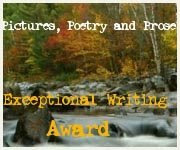Over the last 24 hours I have found myself asking this question. The reason why? Yesterday morning a 22 year old Finnish man, called Matti Juhani Saari entered a college in Finland and opened fire with what is believed to be an automatic pistol. By the time he had finished, ten students had died. Saari also turned the gun on himself, inflicting a fatal gunshot wound.
Why should this be of interest to those of us who teach the Media? Because Saari had used You Tube the week before to post violent videos of himself shooting a gun. The police were alerted and intervened. However, Saari was allowed to keep his guns on a temporary licence.
The story has terrible echoes of a similar incident in Finland a year ago, when a teenage gunman shot dead nine students. He too had posted a video on You Tube, revealing the time and location of his planned attack. On that occasion, the posting went un-noticed until it was too late.
You Tube is one of the great revelations of the internet age, yet the power of the moving image, and the ease with which a global audience can be found, brings with it inherent risks. Inevitably, we can expect to see the Hypodemic Syringe theory being rolled out over the next few days. We may hear the now usual story of how the student was a loner, played violent video games, and had a passion for heavy metal lyrics that advocated death and destruction. It's an easy line to take and perhaps gives shape to the unthinkable, in a way that's easy for many audiences to understand.
The problem is, of course, that such simplification glosses over deeper problems. This young man's psyche must have been terribly troubled indeed, but can we blame the media for what occurred?
The challenge for You Tube will be to find ways of tracking content automatically and searching for clues to inappropriate material. As the events of yesterday demonstrated with terrible clarity, however, even early detection isn't enough, if the official response is not swift and robust.
There is a need for users, commentators and legal enforcement officials to consider carefully how best to proceed.
We should all have the right to express an opinion. But when the opinions expressed present a threat to the wellbeing of the poster or to others, then some form of censorship should be enacted.
From an educational perspective, it is clear that greater efforts must be made to educate our students about the inherent risks of posting content online without due regard for how it might be interpreted by others; while also teaching them to be alert to virtual threats that could cross over from the hyper-reality of the online environment and enter the land of the living.
There's a good review from CNN of the events at the following link:
http://edition.cnn.com/2008/WORLD/europe/09/23/finland.school.shooting/index.html
Wednesday, 24 September 2008
Sunday, 14 September 2008
Watching me, Watching You
I asked my Year 12 students to write me a 250 word review of their favourite TV show or film. The aim was twofold. Firstly, I wanted to see where their interests and passions lie. Secondly, I was keen to see how they would tackle this assignment. Some of them have designed reviews that look like they've been ripped from the pages of Time Out, while others have deconstructed different aspects of their chosen media text into its component parts. It's made for fascinating reading.
I find it encouraging that many of the students already have a keen sense of how to analyse a media text, even though none of them have studied the subject before. They'll need to acquire the right terminology to give more finesse to their critical thinking, but this looks like a good intake.
This week I'll be focusing on Audiences and Institutions, while Laura tackles Forms & Conventions and Representation. After that, I'll start training the students to make their preliminary film task, while Laura will begin Textual Analysis of British TV Drama.
So, what did they like? Choices range from Disney's Aladdin to Long Way Round, Friends, Shaun of the Dead, Tears of the Sun, Desperate Housewives, Ugly Better, and Ghost Whisperer.
I wonder if their choices will be the same after a year of doing Media Studies?
Tuesday, 9 September 2008
A new year a new syllabus
So, here we are at the start of a new academic year.
The big change for those of us teaching in secondary schools is that AS levels now consist of two parts. One part is coursework worth 50%, and the other part is a textual analysis paper, also worth 50%, that will combine elements of the old system of deconstructing a film extract (selected from British TV Drama), together with an essay based on an institutional case study.
In practice a great deal of what we did before will be subsumed into the new scheme. However, there are significant changes, that should make the new syllabus that much better than the old.
The main benefit will be the linking of theory to practice, which in the past had been too easily split apart. Now, the two sides of the Media Studies coin will have far more explicit links made between them. Students will formally use practical assignments to help them comprehend the numerous theories deployed in analysis of the media.
The other change is the move to electronic delivery of coursework assessment. Students will need to create blogs of their own, documenting the development of their portfolios. This is a great idea and I'm hoping to link to their blogs, once they're up and running in the next week or so.
This term the students will be making a preliminary film task, followed by the opening sequence to a thriller film.
It should be fun.
Subscribe to:
Posts (Atom)





